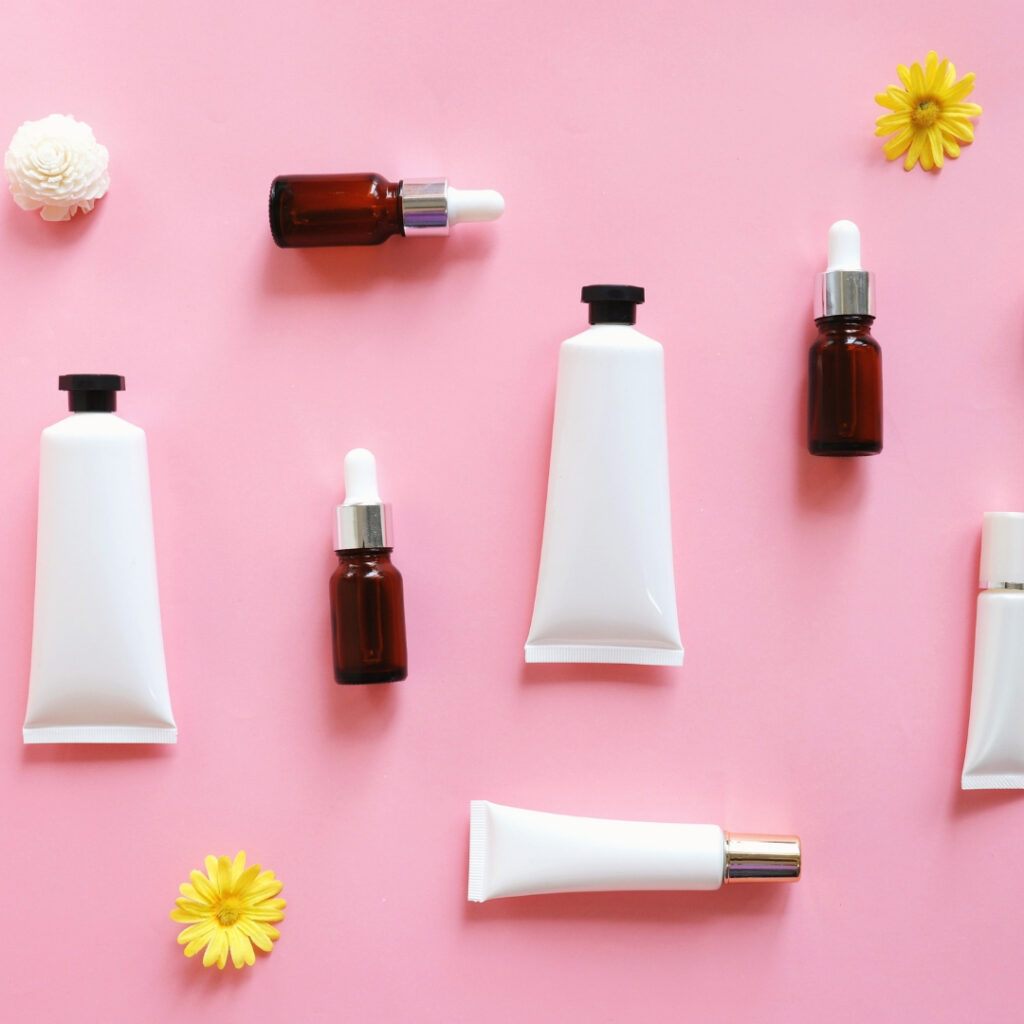Have you found yourself trapped in a cycle of little tiny bumps that look like whiteheads ?
Normally, cosmetic acne lesions are non-inflammatory and although you may not relate cosmetic products to the sudden outbreak of acne, FYI; it may take up to 6 months for acne cosmetica to start showing up on the skin.
Of course, once the acne flares up, more makeup is needed to cover it up and the story begins.
To make things even worse, just foundation is not enough in today’s makeup routine; an arsenal of additional products like primers, concealers, highlighters, bronzers… are part of the new makeup looks with layers upon layers of cosmetics which translate into thousands of chemicals that are applied daily on the skin and among them, many may be comedogenic.
As stated by Dr. James Fulton in his book Acne RX, who I consider the maximum authority in acne : ” Any woman who is genetically acne-prone or who suffered acne as a teenager (even if only a mild case) is almost certain to be affected by comedogenic ingredients in cosmetics.”
By definition comedogenic ingredients are those that can be absorbed into the skin penetrating deep into the follicle causing clogging of the pores.
There is an ample list of comedogenic ingredients which are rated in a scale of 0 to 5 with 5 being the most problematic ones.
They are way too many to mention them all here but keep in mind the following ones because they are rated high as comedogenic ingredients found commonly in cosmetic formulations :
- Lanolin : especially its derivatives like acetylated lanolin and ethoxylated lanolin.
- Isopropyl myristate and its other forms : isopropyl palmitate, decyl oleate, isocetyl stearate, myristyl myristate, butyl stereate, isopropyl isostearate, octyl palmitate, PPG 2 myristyl proprionate, myristyl lactate, stearyl heptanoate.
- Lauric acid
- Cetearyl alcohol and ceteareth 20
- Laureth -4
- Laureth -23
- Oleth-3
- Cocoa butter
- Myristic acid
- Butyl stearate
- Glyceryl stearate SE
- Wheat germ Glyceride
- Coconut butter
- Mink oil
- Soybean oil
- Shark liver oil
- D & C red #30
- Stearic acid TEA
A few helpful tips :
√ Keep your makeup simple and use less cosmetic products. With acne less is better.
√ Avoid heavy creams and thick formulations
√ Create a list of those ingredients you want to avoid and take it with you while shopping for cosmetics.
√ Check labels and avoid products containing comedogenic ingredients to minimize your chances of developing acne cosmetica or worsening your existent acne.
Thank you for being here,
Until next time,
Dora Salazar
Paramedical Aesthetician and beauty professional.
References
Fulton, J. (2001) Acne RX. Dutton Press, Inc.
https://en.wikipedia.org/wiki/James_Fulton_(dermatologist)




